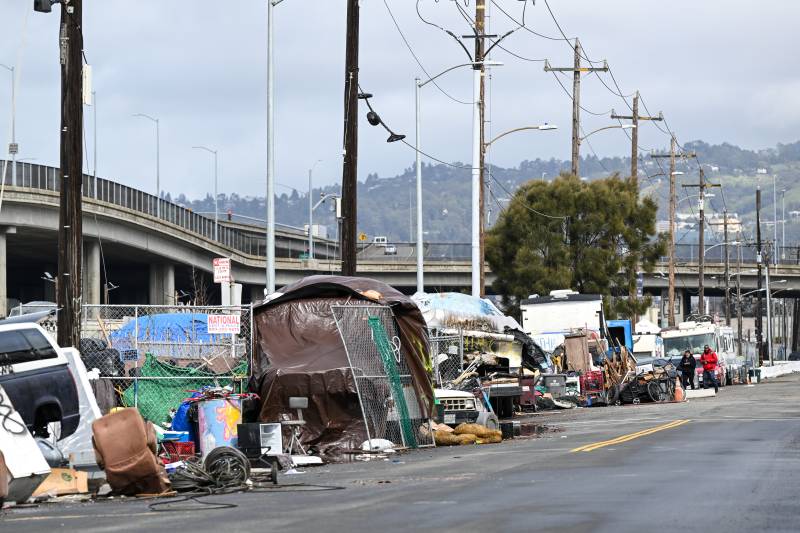A lot of that money came from the increase in state funds during the pandemic, Russell said.
“The surge of the pandemic funding over the last three, four years, has been significant in affecting what we see today,” he said. “There is this kind of delay of the longer-term structural effects from receipt of investment, implementation, to program outcomes.”
Point-in-time counts are an attempt to count every person in the county experiencing homelessness on one particular day, usually in January. The counts, mandated by the federal Department of Housing and Urban Development, are conducted every other year to identify homelessness trends and determine funding priorities.
This year’s count found the share of homeless individuals living in unsheltered conditions — which includes people living in RVs — decreased by 11%, with a greater share living in emergency shelters or transitional housing.
Homelessness among veterans, youth and families also dropped. There were 428 homeless youth under 25 this year, down from 880 in 2022, while the number of veterans dropped to 355 from 550 over the same period.
Though the final report has not yet been released, Russell confirmed Alameda County was no exception to the statewide trend of growing homelessness among seniors.
The county has been seeing an “increase year-over-year in older adult homelessness,” Russell said. “Roughly 25% of those we serve in our homeless response system are seniors.”
While the total homeless population decreased countywide, some cities saw increases, including Albany, Alameda and Hayward. Oakland, home to by far the greatest share of the county’s unhoused population, also saw an increase.
However, it’s a welcome continuation of a trend that shows the rate of growth in homelessness slowing over the last several years. This year’s 9% increase in Oakland is down from a 24% increase observed in 2022 and a 47% increase in 2019. (The point-in-time count was postponed in 2021 due to the COVID-19 pandemic.)
Russell called the change “encouraging.”
“Even though there was a net increase there, it’s less than a third of the increase that has happened in the previous last three counts,” Russell said. A change that is “not insignificant in terms of slowing those otherwise precipitous increases,” he said.
Part of the last decade of growing homelessness in Oakland could be fallout from the 2008 foreclosure crisis and ensuing recession that hit Black homeowners particularly hard, followed by sharp increases in rents in the years after, Russell said. Homelessness is, at the end of the day, a housing issue, he said.
“The lack of housing, the lack of that stability, those are the things that cause the myriad other factors in folks’ lives, not vice versa,” Russell said.
Some of the cities that saw the biggest drops in the number of people experiencing homelessness were Berkeley, Fremont and Union City, each counting a more than 200-person decrease.
This year’s count in Alameda County utilized almost 1,300 volunteers, three times the number of people involved in previous counts, which Russell said allowed for what is hopefully a more accurate count and for the collection of more detailed demographic data and interviews.
The full report with analysis of the data is expected this summer.
